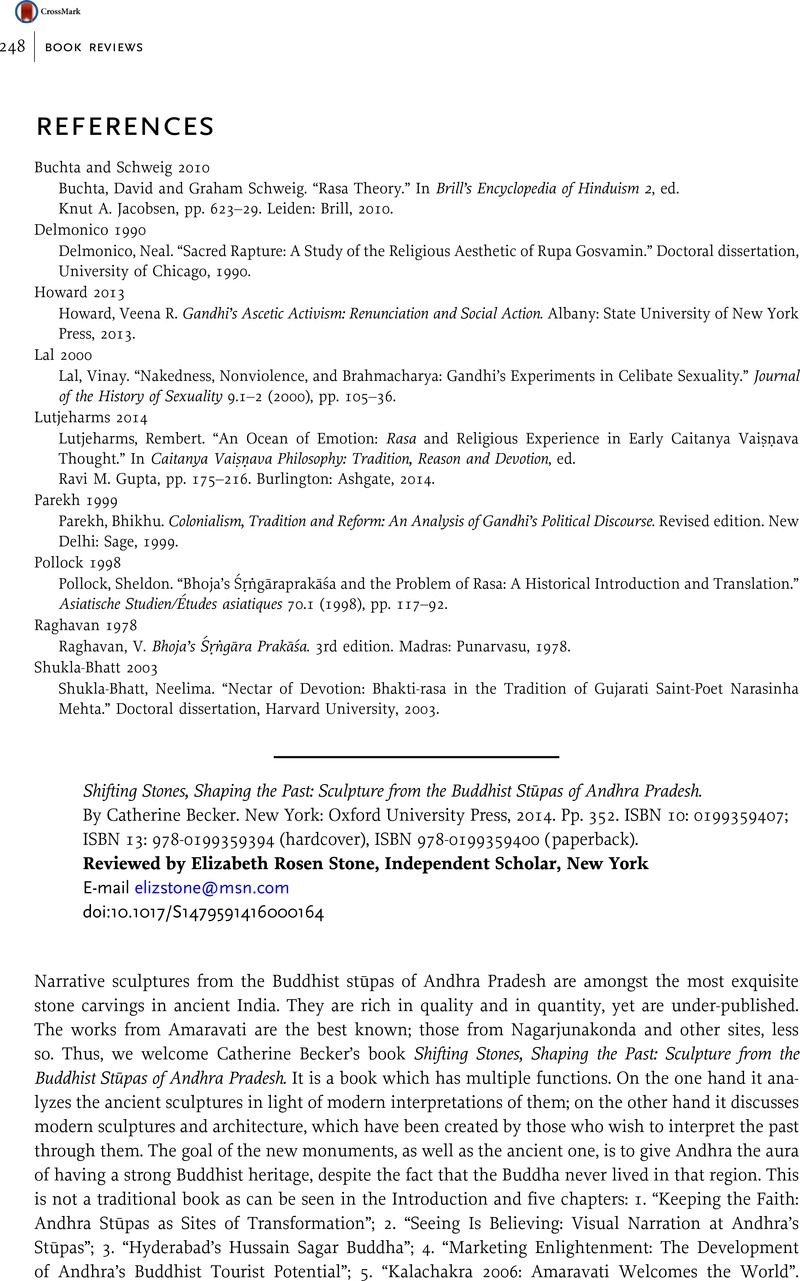No CrossRef data available.
Article contents
Shifting Stones, Shaping the Past: Sculpture from the Buddhist Stūpas of Andhra Pradesh. By Catherine Becker. New York: Oxford University Press, 2014. Pp. 352. ISBN 10: 0199359407; ISBN 13: 978-0199359394 (hardcover), ISBN 978-0199359400 (paperback).
Published online by Cambridge University Press: 07 July 2016
Abstract

- Type
- Book Reviews
- Information
- Copyright
- Copyright © Cambridge University Press 2016
References
1 Robert Scharf, “On the Allure of Buddhist Relics,” in Embodying the Dharma: Buddha Veneration in Asia, eds. David Germano and Kevin Trainor (New York: SUNY, 2004), p. 170 (entire article pp. 163–92).
2 Ashva-ghosha, The Handsome Nanda, trans. Linda Covill (New York: NYU Press, 2007).
3 Andy Rotman, Thus I Have Seen: Visualizing Faith in Early Buddhism (Oxford: Oxford University Press, 2009).
4 While the story appears in a Buddhist context where it is illustrated at least eleven times in Andhra Pradesh, it appears elsewhere in both religious and secular contexts beginning in third-century Andhra Pradesh and spreading around the world to the twentieth century. See Monika Zin, “The Parable of ‘The Man in the Well’: Its Travels and Its Pictorial Traditions from Amaravati to Today,” in Arts, Myth, and Visual Culture, eds. P. Balcerowicz and J. Malinowski (New Delhi: Manohar Publishers, 2011), pp. 33–93.
5 Robert Knox, Amaravati: Buddhist Sculptures from the Great Stūpa (London: Dover, 1992).


